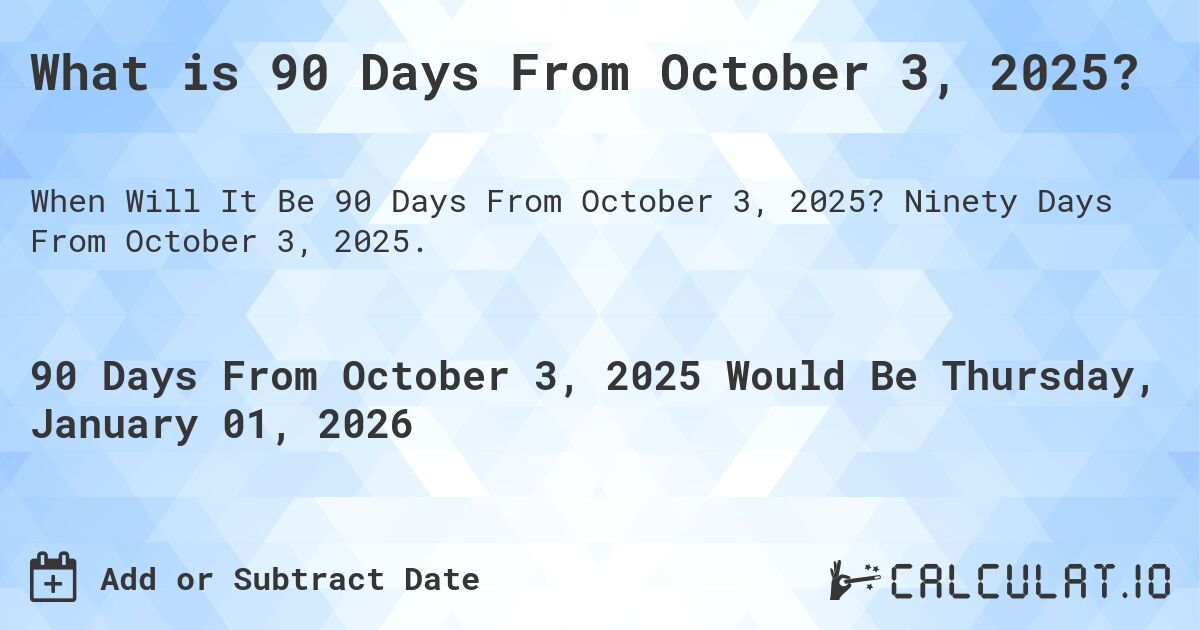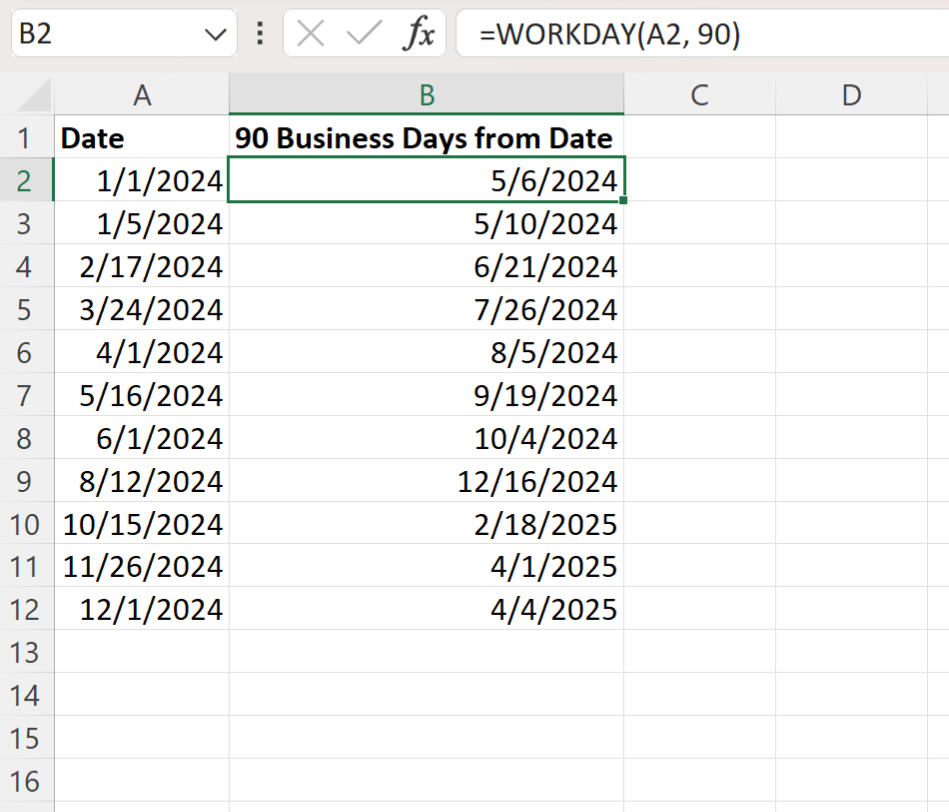So I was updating my project timeline the other day and needed to figure out what date falls exactly 90 days after October 3, 2024. Seemed simple enough at first glance, but I wanted a foolproof way – didn’t trust myself to just count on fingers.

My First Tries & Mistakes
Started by grabbing my desk calendar. Flipped to October 2024, found the 3rd. Then I started counting days forward, month by month, saying the numbers out loud like “Oct 4… Oct 31… now November 1…” Messy. Lost count somewhere in November, had to restart. Tried again, counting weeks instead: 90 days divided by 7 is roughly 12.857 weeks. That didn’t help either – ended up with a confusing fraction. Ugh. Waste of paper and brainpower.
Getting Smarter About It
Scrapped the manual counting. Remembered that dates are just math underneath. Thought: Why not break it down month by month? October has 31 days, so from Oct 3 to Oct 31 is 28 days (since 31 minus 3). Wait, no – actually, starting from the 3rd means we count the 4th as day 1 after the start. Duh! Let’s recalculate:
- October 3 to October 31: That’s actually 28 days after the start date (Oct 4 = day 1, Oct 5 = day 2, … Oct 31 = day 28).
- So, 90 minus 28 days used = 62 days left to find.
November has 30 days. Used up all 30 days of November. That left 62 minus 30 = 32 days still left.
December has 31 days. Used up all 31 days of December. Now 32 minus 31 = 1 day still left.
Okay, so after December 31, 2024… the next day lands us in January 2025. That 1 leftover day = January 1, 2025.

Double & Triple Checking
Felt good, but I needed verification. Pulled up my digital calendar software. Scrolled to October 3, 2024. Clicked on it and asked it to add 90 days. Instantly jumped to… January 1, 2025. Perfect! Thought about leap years – 2024 is a leap year, but since we’re finishing in January 2025, that doesn’t even mess with the February days we passed through. No effect.
Also did a quick sanity check: Counted backwards. January 1, 2025 minus 90 days? December = 31 days (back to Dec 1), November = 30 days (back to Nov 1), October = 29 days (31 total, minus 2 gets us back to Oct 3? Wait. Let’s do it: Jan 1 minus 1 day = Dec 31, 2024. Minus 31 more days (all of Dec) = Dec 1? Messed up the backtracking logic temporarily. Instead, focused: Starting at Jan 1, go back 1 day is Dec 31. Back another 31 days (December) lands on Dec 1? Not good. Cleaned it up: From Jan 1, go back days.
- Jan 1 minus 1 day = Dec 31
- Minus 31 days (Dec) = Nov 30
- Minus 30 days (Nov) = Oct 31
- Minus 28 days should get to Oct 3? Oct 31 minus 28 days is Oct 3? Yeah (Oct 31 is day 1 back, Oct 30 is day 2, … Oct 3 is day 28 back). Confirmed! It all adds up.
Finalizing & Concluding
Spilled some coffee on my notes – typical. But the math stuck: October 3, 2024 + 90 days = January 1, 2025. The key takeaway for me? Breaking months down step-by-step is way clearer than counting 90 on a calendar. The digital tool was a lifesaver for instant verification too. Next time I need to do quick date math, I’ll lean into the month chunks first, then verify electronically. Simple wins.
